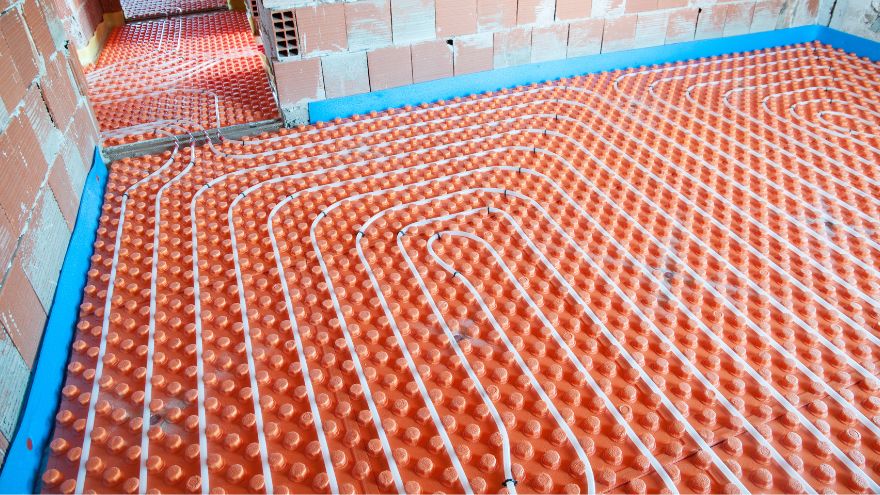Underfloor heating has been gaining many supporters in recent years. No wonder, it is very practical and functional, it allows you to eliminate traditional radiators, which often make it difficult to achieve your dream interior design. Which underfloor heating pipes should you choose?

What diameter of underfloor heating pipe should I choose?
Dedicated pipes for underfloor heating are solutions with a specific structure adapted to the needs of the installation. They are light and durable, made of modern plastics. Its characteristic feature is a high degree of heat conductivity and flexibility. This allows for convenient installation and reduces the risk of damaging elements during installation.
One of the advantages of installing underfloor heating is that it is quite simple, in terms of construction, to implement. The whole thing is connected to a heat source, which can be central heating or electricity-based heating. Most often, the system is heated with water contained in the system, although electricity can also be used. The whole thing is placed on specially adapted boards, equipped with special protrusions. You will also need a special mortar to facilitate heat transfer throughout the room.
The underfloor heating pipe is available in several variants. Depending on the material they are made of, pipes are distinguished: polypropylene, polyethylene, polybutylene, PEX. Although these are usually plastic materials, in some situations plastic-sheathed copper pipes are also used. This solution is exceptionally durable and very tight. High quality goes hand in hand with a higher price of such a solution.
For underfloor heating to be effective and efficient, not only the material it is made of is important, but also the outer diameter and thickness of the pipes. It is assumed that optimal pipes for underfloor heating should have a diameter ranging from 9.9 mm to 20 mm. The smallest permissible diameter, i.e. 9.9 mm, is generally used only when the floor structure does not allow the use of a wider pipe. By default, the variant with a diameter of 16 mm is most often used, wider pipes are used only when the floor is thicker than standard.
Underfloor heating - every how many cm 3
When deciding on underfloor heating, you should pay attention not only to the diameter and thickness of the pipe. The proper planning of the entire installation and the density of the pipes are also very important. It should be emphasized that the proper layout of the installation depends on several factors, including: heating efficiency, heat losses and room volume. Most often, the pipes are located at a distance of 15, 20 or 25 cm from each other, but it is possible to have a different density of underfloor pipes within one room. In critical places, such as doors or windows, which carry the risk of increased heat loss, pipes can be placed even every 10 cm.
The way the installation is arranged is also an important issue. As a rule, two solutions are adopted - a screw or a meander system. Which one to choose should be specified in the project. Taking into account all specific factors makes the underfloor heating effective and allows for effective heating of the entire room. The meandering variant of underfloor piping will work primarily in rooms with external walls of the building. The design of such an installation allows the maximum temperature to be concentrated in places where heat losses are greatest. The highest temperature is, of course, at the beginning of the loop, and decreases over time, while maintaining uniform heating of the entire surface. In turn, the screw system is better in rooms inside the building where none of the walls are external. Arranging the installation in the shape of a characteristic snail allows for even heating of the entire surface.
Underfloor heating, how many pipes per m2
How much material will be needed depends on the individual needs of a given facility, including: the distance at which subsequent parts of the installation will be placed. Where heat losses are high, it is necessary to make the system more dense, and therefore more material will be needed. Therefore, it is not possible to clearly indicate the amount that will be necessary to complete each project. It is assumed that approximately 10-15 m of heating pipes will be needed per 1 square meter of room.
When performing the installation, remember that the pipe is attached to the ground with special clips. As a rule, approximately 2-3 clips are used per 1 meter of underfloor heating, so determining the number of underfloor heating pipes will also allow you to assess the number of fasteners necessary for proper installation.